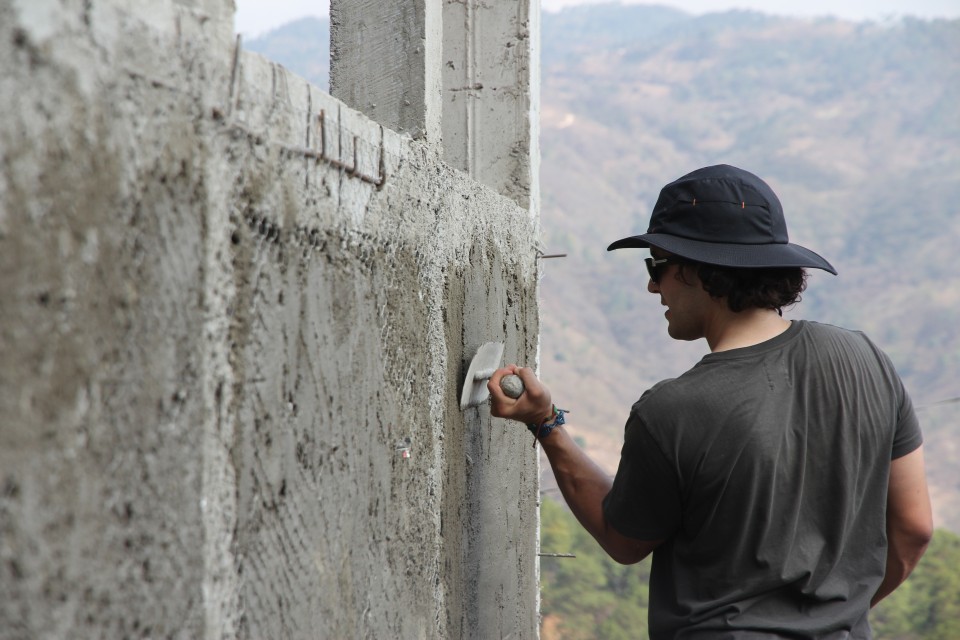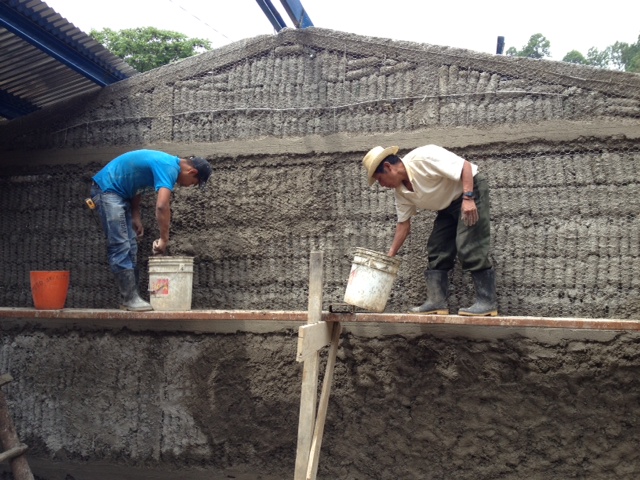• In total, you need to use 3 layers of cement in order to completely cover the eco-bricks on both sides.
• The first layer of cement is the thickest. This cement clings to the chicken wire, trash, and eco-bricks. This layer has a rough finish.
• The second layer of cement is thinner than the first – after this layer, the chicken wire can only just be seen.
• The third and final layer of cement is thinner than the first two, and smooth. The cement for this layer is usually made with yellow sand (which is finer and lighter to give a more finished appearance), and is stroked on to give a smooth, attractive finish.
• Make sure you allow each layer of cement to dry completely before adding the next layer.





